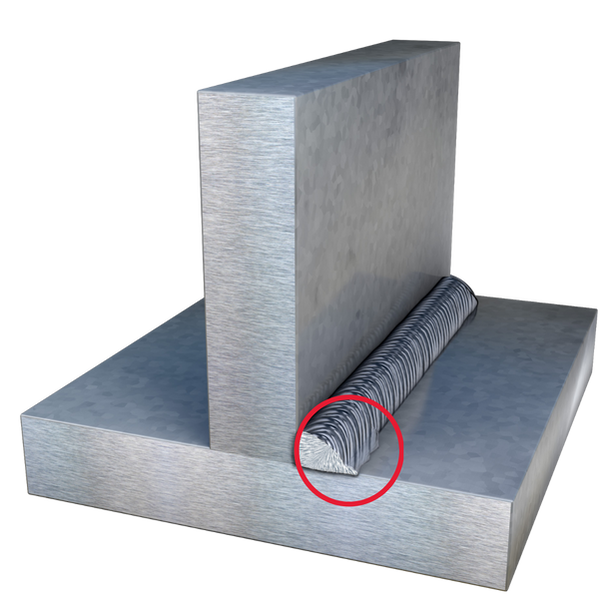Preventing Weld Undercut: Proven Approaches Every Welder Must Know
Preventing Weld Undercut: Proven Approaches Every Welder Must Know
Blog Article
Mastering the Art of Welding: Exactly How to Prevent Undercut Welding Issues for Flawless Construction Results
By understanding the origin causes of undercut welding and carrying out efficient methods to avoid it, welders can elevate their craft to new levels of excellence. In the pursuit of remarkable manufacture outcomes, mastering the art of welding to avoid undercut issues is not just an ability however a need for those making every effort for excellence in their job.
Comprehending Undercut Welding

To avoid undercut welding, welders need to guarantee appropriate welding parameters, such as adjusting the current, voltage, travel rate, and maintaining the right electrode angle. Additionally, using the suitable welding method for the details joint arrangement is necessary. Using weaving movements or backstepping techniques can aid guarantee appropriate weld metal deposition and decrease the likelihood of undercut formation. Routine inspection of welds throughout and after the welding procedure is also critical to capture any kind of undercut very early and make essential adjustments to stop further defects. Preventing weld undercut. By comprehending the sources of undercut welding and carrying out preventive steps, welders can accomplish top notch, structurally sound welds.
Reasons of Undercut in Welding
Comprehending the aspects that add to undercut in welding is vital for welders to produce top quality, structurally sound welds. Damaging occurs when the weld metal does not effectively load the groove formed between the base steel and the formerly transferred weld steel. Numerous factors can result in undercut in welding. One usual cause is excessive warmth input. Welding at high temperatures for extended periods can result in the base steel melting greater than wanted, resulting in damage. Insufficient welding present or incorrect welding speed can additionally add to damage. Inadequate current may not provide sufficient heat to thaw the base and filler metals adequately, while excessive rate can protect against correct blend, creating undercut. Additionally, inappropriate electrode angles or incorrect lantern control strategies can create locations of reduced weld steel deposition, promoting undercut. Recognizing these reasons and implementing appropriate welding strategies can help avoid damaging issues, guaranteeing strong and long lasting welds.
Techniques to avoid Undercutting

To minimize the threat of damaging in welding, welders can employ critical welding techniques intended at boosting the top quality and honesty of the weld joints. One efficient technique is to readjust the welding specifications, such as voltage, existing, and take a trip rate, to guarantee correct warm input and deposition. Preserving an ideal electrode angle and making sure consistent traveling speed can additionally assist prevent undercut. In addition, utilizing the proper welding technique for the details joint arrangement, such as weave or stringer beads, can add to decreasing damaging. Preventing weld undercut.
Moreover, proper joint preparation, consisting of making sure tidy base products without contaminants and using the appropriate welding consumables, is essential in preventing undercut issues. Using back-step welding methods and regulating the weld bead profile can additionally help distribute warmth evenly and lessen the risk of undercut. Regular inspection of the weld joint throughout and after welding, in addition to implementing quality control actions, can assist in finding and addressing damaging concerns without delay. By implementing these strategies faithfully, welders can accomplish perfect fabrication results with marginal undercut issues.
Significance of Proper Welding Parameters
Selecting and preserving appropriate welding criteria is necessary visit the website for achieving successful welds with marginal problems. Welding specifications describe variables such as voltage, present, travel rate, electrode angle, and protecting gas circulation rate that straight impact the welding process. These criteria have to be very carefully changed based upon the kind the original source of material being welded, its density, and the welding method used.
Appropriate welding specifications make certain the correct amount of warm is related to melt the base steels and filler product consistently. If the parameters are set too expensive, it can bring about excessive warm input, creating spatter, distortion, or burn-through. On the various other hand, if the parameters are too reduced, insufficient blend, absence of penetration, or damaging might take place.
Quality Control in Welding Procedures

Conclusion
To conclude, grasping the art of welding requires an extensive understanding of undercut welding, its causes, and techniques to stop it. By making certain correct welding parameters and executing quality control methods, perfect construction outcomes can be achieved. It is essential for Check This Out welders to constantly pursue quality in their welding operations to stay clear of undercut concerns and generate premium welds.
Undercut welding, a typical flaw in welding procedures, happens when the weld steel doesn't properly load the groove and leaves a groove or clinical depression along the bonded joint.To prevent undercut welding, welders ought to make sure correct welding specifications, such as readjusting the current, voltage, travel rate, and preserving the correct electrode angle. Poor welding current or wrong welding speed can also add to damage.To reduce the threat of undercutting in welding, welders can employ calculated welding methods aimed at enhancing the high quality and honesty of the weld joints.In verdict, understanding the art of welding requires a comprehensive understanding of undercut welding, its reasons, and strategies to prevent it.
Report this page